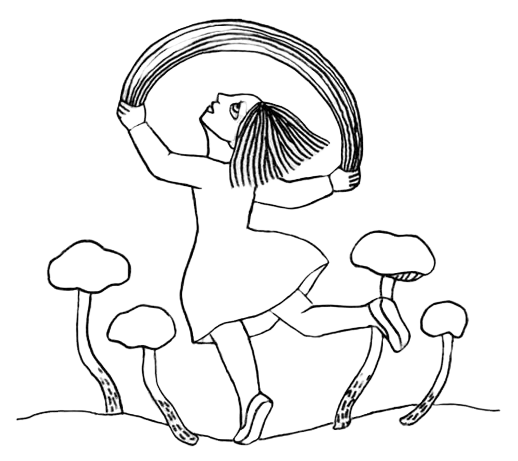21 December 2023, Kobe
The spider-associated entomopathogenic fungus collected on December 20 appears to be a species of Hevansia. Although the exact species could not be determined, microscopic examination suggests similarities with Hevansia websteri.




20 December 2023, Kobe
Returned to the location where I found Ophiocordyceps sphecocephala on December 6. This time, I brought a tall tripod. After re-photographing the previous specimen, I carefully searched the surrounding area and discovered two additional individuals. A little further along, I seemed to have hit a productive spot and found seven more specimens. One of them, which was simply caught on a branch, fell off during photography, so I took it home.
Among the spider-parasitizing fungi, I found one specimen of Gibellula dimorpha and another that didn’t appear to be a Gibellula. I brought the latter home for further examination.









14 December 2023, Kobe
An old specimen collected on December 6, presumed to be Ophiocordyceps superficialis (Yellow Scale Insect Cordyceps). Upon closer inspection, the perithecia appear different.
I examined it under the microscope, but the size and shape of the perithecia did not resemble those of O. superficialis that I previously observed (as seen in the fourth photo). Unfortunately, no asci or spores were found. Could this be a case of hyperparasitism?
Around the perithecia, slender, spine-like anamorphic structures were densely packed. They looked very similar to the anamorphs of O. superficialis I had previously examined (second photo). Possibly Simplicillium?






27 November 2023, Kobe
Lately, I’ve been researching environments where kudzu (Pueraria) roots swell and become woody. Perhaps I’m beginning to understand the conditions, as I’ve started finding them in various locations. Today, in a certain area of the back side of Mt. Rokko, I discovered several quite thick ones. The photo is from a park just five minutes from my house, turns out they can be found even in places like this.
Why am I investigating this? Of course, it’s because I’m hoping to find this particular fungus. Unfortunately, I haven’t found it yet, but I might explore the Hokusetsu area next year in preparation.
Incidentally, at the location I visited today, I found an immature entomopathogenic fungus growing from the root of a kudzu plant. I got my hopes up for a moment, but it turned out to be Cordyceps annullata (Himekuchikitampotake).
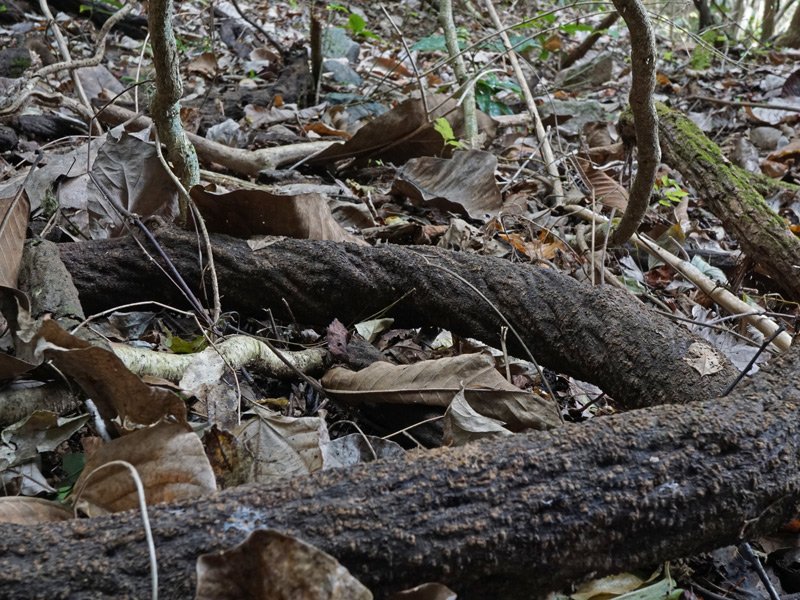







16 November 2023, Kobe
Returned to the back side of Mt. Rokko. Although it rained last week and the ground is damp, there are hardly any mushrooms out. As for entomopathogenic fungi, I found two specimens of Ophiocordyceps rubiginosiperitheciata (Kimawariarage) and a specimen of Aschersonia kawakamii on camellia leaves, with the host identified as the camellia whitefly (Aleurocanthus camelliae).
There weren’t any particularly photogenic mushrooms, so this is the only photo I took. The stink bug is dead, but it doesn’t appear to be infected with anything. Could this be the feces of the mulberry longhorn beetle (Apriona germari)? As far as I know, there are no documented entomopathogenic fungi that parasitize this species.
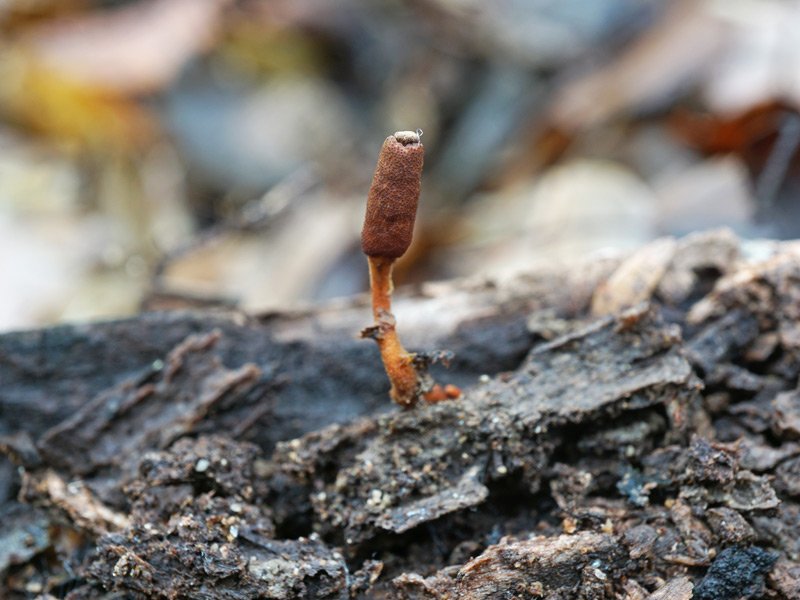



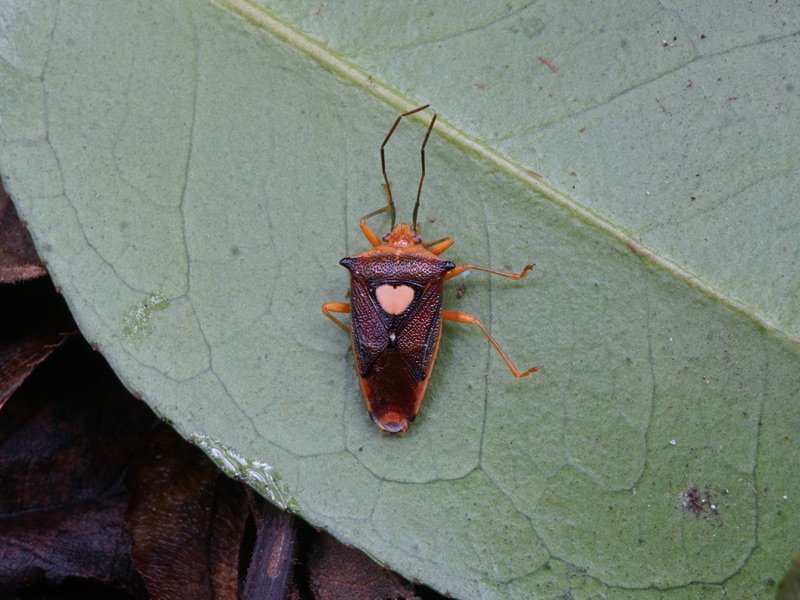

19 October 2023, Kobe
Traveled to the northern part of the city. I had visited this area once in spring without much success, but the environment looked promising, so I decided to come again. However, the river had dried up and the ground was parched. There weren’t many mushrooms either, except for a profusion of Armillaria species.
Other mushrooms were sparse and not particularly interesting. Entomopathogenic fungi were also underwhelming—Aschersonia kawakamii, Conoideocrella luteorostrata, and a few Ophiocordyceps rubiginosiperitheciata (over ten specimens) were found.
As a bonus, I photographed a beetle that was sitting still. Possibly a Mimela japonica (Japanese beetle)?












26 September 2023, Kobe
Visited Mt. Rokko’s backside again. Although it’s not far from the area I explored last week, here the ground was completely dry and there wasn’t a mushroom in sight. The only exception was a large cluster of Gymnopilus spectabilis. If they were edible, it would’ve been a bountiful harvest on its own. There were also a few Podostroma cornu-damae sprouting, though they were still small.
As for entomopathogenic fungi, I found two specimens of Ophiocordyceps longissima and five of Cordyceps cardinalis.


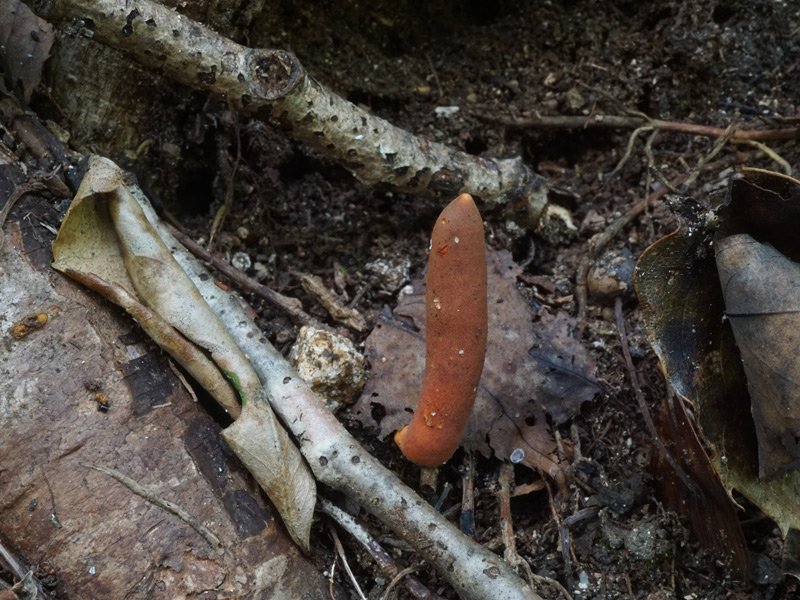




15 September 2023, Kobe
The orange-colored spider fungus (Gibellula pulchra) collected on September 4, though some were overtaken by mold, a few have begun to develop perithecia. Photographed using focus stacking. Additionally, there were Gibellula specimens that appear to be the anamorph form of the same species.
The conidiophores and conidia taken from specimens with and without perithecia appear indistinguishable. The synnema exhibits a flagpole-like form, with an infertile swelling at the tip. Perithecia and asci of the orange-colored spider fungus were also observed. Unfortunately, the specimens seemed to have deteriorated in their immature state, and no spores were seen.
Some of the collected specimens became covered in white mold. Could it be Akanthomyces lecanii?













7 September 2023, Hyogo
Another day of searching for new sites, this time outside the city. Although it seems to have rained recently and the ground was moist, the yield of entomopathogenic fungi was underwhelming.
There were two Gibellula specimens resembling those found on September 4, one additional Gibellula of a different species, and one small Gibellula clavulifera specimen. Other findings included one Isaria takamizusanensis, a cicada infected by an unidentified fungus still clinging to a branch, and another cicada still perched on a tree trunk infected by Metarhizium.
While few insect-parasitic fungi were found, many ordinary mushrooms were present, with a notable abundance of Amanita species.








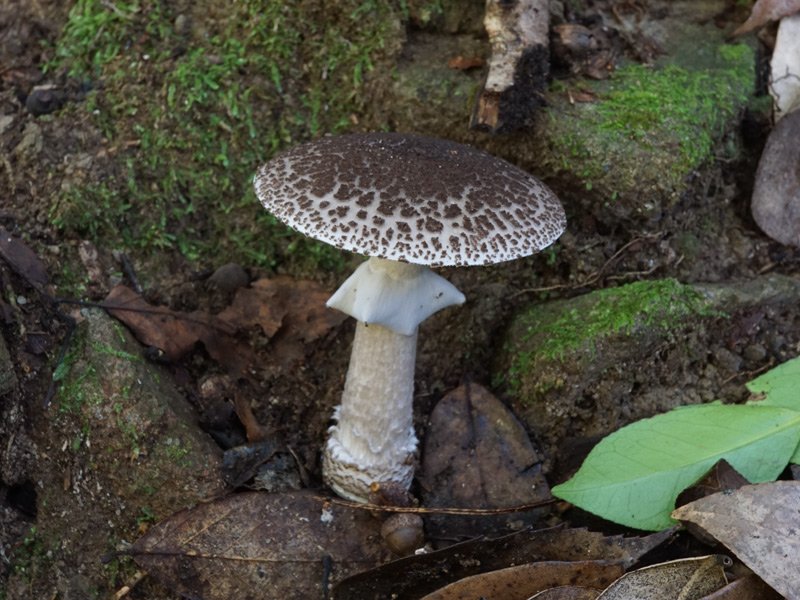



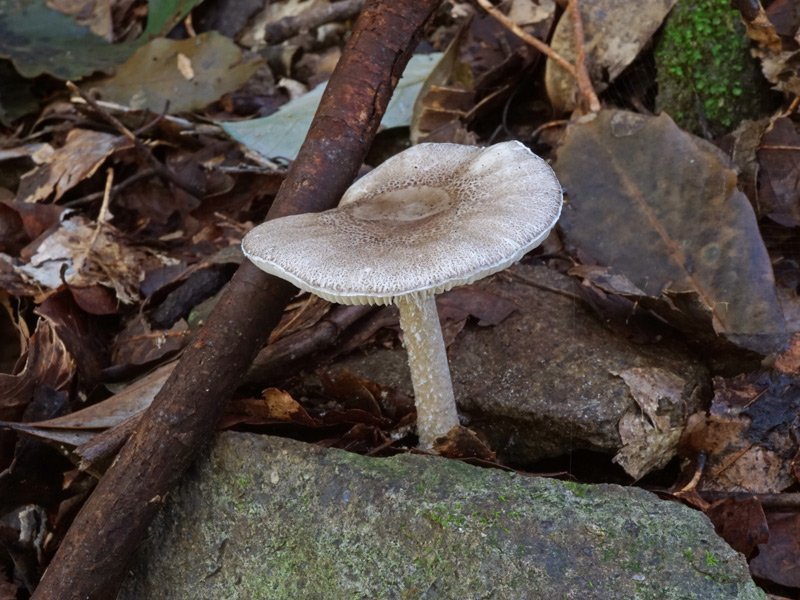





30 July 2023, Kyoto
Specimens collected during yesterday’s fieldwork in Kyoto Prefecture. While I was overcome by the heat and resting seated on the roadside, I noticed a leaf that had fallen to the ground right in front of me. On it was a fungus from the Moelleriella genus. This was another specimen from yesterday, a very tiny Gibellula parasitizing a spider.
I refer to this as the “feather duster type,” but upon closer inspection, it seems to be developing perithecia. Also found were a fully mature Gibellula clavulifera with synnemata and a hyperparasitic fungus on Dorcatoma beetle, which was probably originally Cordyceps annullata.
Although I didn’t take a picture, there were hundreds of Isaria tenuipes present. I don’t have a full count of everyone’s harvests, but it seems we identified 15 to 16 species in total. I had never visited this site during such a hot season before, but realizing that so many entomopathogenic fungi can be found even in this weather made me appreciate once again just how excellent a field it truly is.




22 July 2023, Kobe
Visited Mt. Rokko’s backside again. As it hasn’t rained at all lately, there were hardly any mushrooms. For some reason, however, Amanita caesarea (commonly known as Caesar’s mushroom) was growing abundantly. Aside from that, only a few boletes could be found. Thismia japonica was also starting to appear.
As for entomopathogenic fungi, I found one immature, unidentified specimen, which I brought back for continued cultivation. There was also Cordyceps militaris parasitizing a Dorcatoma beetle and a remarkable Isaria tenuipes. The latter wasn’t a cluster but a single organism connected to a large underground pupa.










13 July 2023, Kobe
A park just five minutes from home. It’s been a few days since the rain, and mushrooms are finally starting to appear. Amanita species are especially abundant, along with some boletes and Russula.
And finally, I found a Cordyceps sobolifera here too. Just one immature specimen, but it confirms that where Platypleura kaempferi cicadas are present, this fungus will emerge.








10 July 2023, Kobe
For fieldwork on Cordyceps nutans found in grassy habitats, I headed to Mt. Rokko again. Since I planned to enter the kudzu fields and had a terrible experience last time being swarmed by biting midges, I wore full rain gear to protect myself. This kept the midges away, but the heat nearly overwhelmed me.
I confirmed over one hundred host bugs, but only six individuals of Parastrachia japonensis were found infected.
While I was searching for C. nutans, I came across a moth cocoon that has been gaining attention recently. Upon closer inspection, I saw that perithecia were indeed forming on it.



26 June 2023, Nagaokakyo
Returned to Nagaokakyo City after a long time. Various common entomopathogenic fungi were found, but nothing particularly unusual. Some areas were closed off due to heavy rain. Numerous specimens of Ophiocordyceps nutans (Camellia scale fungus) were observed, along with four of Isaria tenuipes (Flower cocoon fungus), two of Cordyceps annullata (Hime-kuchiki tanpopo-take), one Ophiocordyceps formicarum (Taiwan ant fungus), one Ophiocordyceps prolifica, one Isaria takamizusanensis (shakutorimushi harisenbon), and one unidentified spider-infecting fungus. Several specimens of Beauveria bassiana (white muscardine fungus) were also found, as well as numerous Conoideocrella tenuis.
The host of Conoideocrella tenuis varies depending on location and tree species; in this site, it was found parasitizing a species of soft scale insect, seen in the top left of the photo.
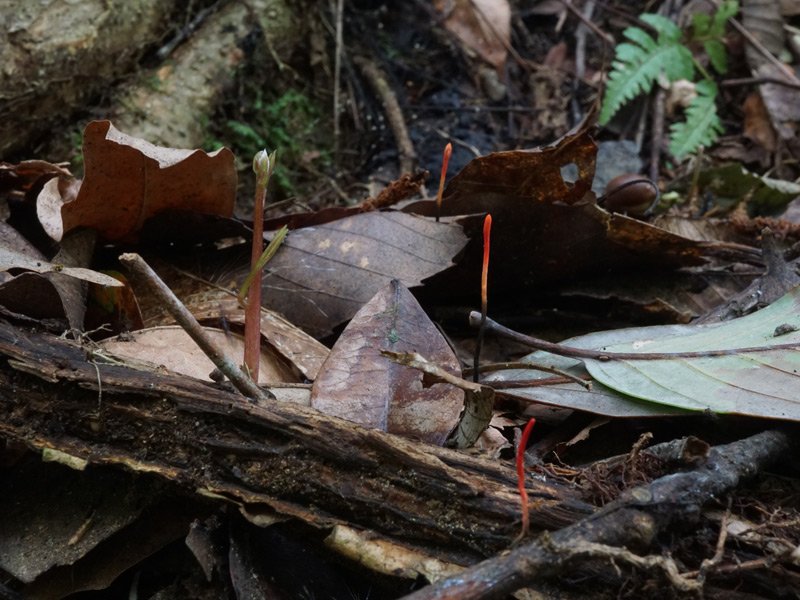











10 June 2023, Kyoto
While in Kyoto for an errand, I took a small detour to look for Phallus indusiatus (veiled lady). Perhaps because some time had passed since the rain, not many were out, but by following the smell, I managed to find five or six specimens. Thanks to the overcast sky since morning, they hadn’t withered much even by around 11 a.m.
Many unopened eggs were also found, so the day after the next rain could bring a major emergence.


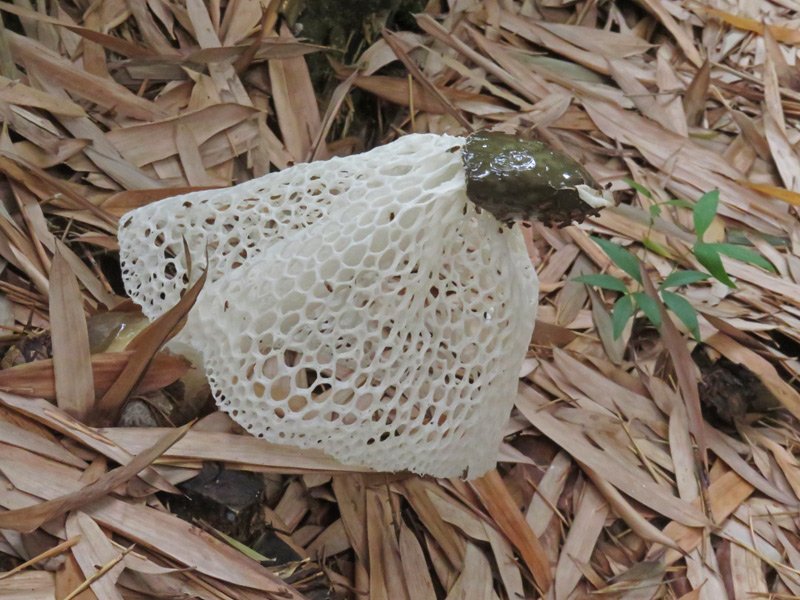


31 May 2023, Kobe
Ophiocordyceps taiwanensis collected on May 27 is beginning to develop its fertile structures. The surface of the stroma is densely covered with conidiogenous cells.




3 May 2023, Nagaokakyo
The Elaphocordyceps specimen (Numenritampotake) collected in Nagaokakyo began to dissolve after being left in a container, but the host, a Tulostoma species, became covered with a white fungus. Upon microscopic examination, the anamorph appears to be the same as one previously observed in a Numetampotake from Kobe.
This, in turn, is the anamorph collected from the host of a spring-form Elaphocordyceps also found in Nagaokakyo.



4 April 2023, Hyogo
Today, I met up with Mr. Y partway and we headed to Mr. M’s field. He kindly guided us to several locations, including the site of the Cordyceps nipponica (Kusaabu-tanpotake).
To confirm the host, I dug out one specimen, removed the soil, and photographed it. Judging by the shape of the posterior, I believe it is safe to identify the host of this specimen as a soldier fly larva. Afterward, I carefully reburied it in its original location. I did not dig up the other specimen.

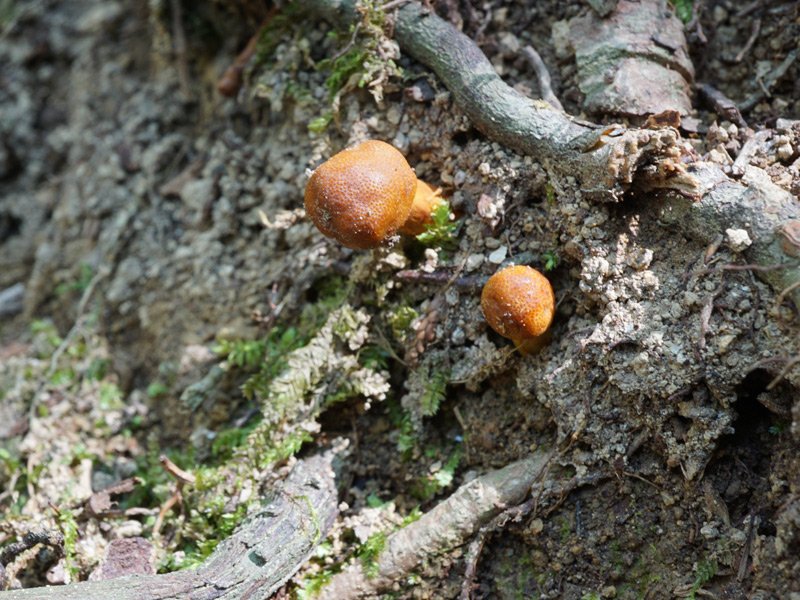



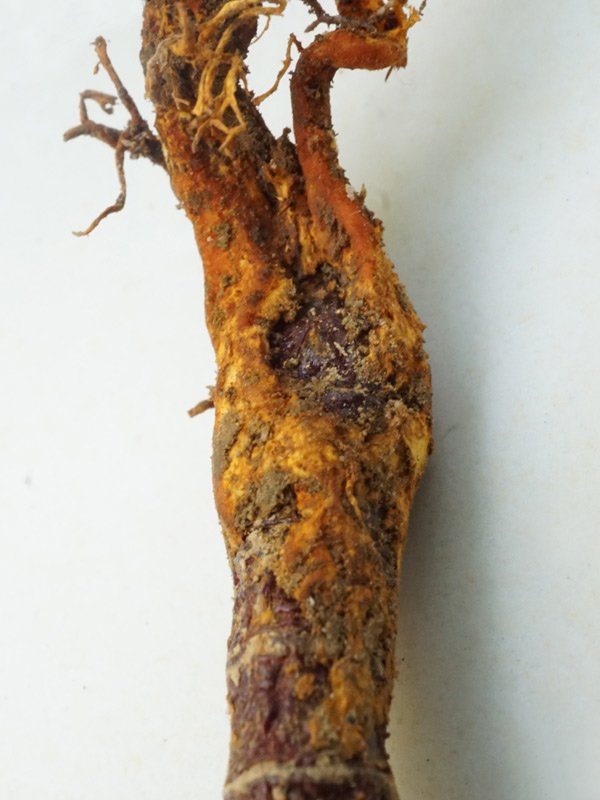



5 January 2023, Kobe
The season’s “first appearance on duty” was at S Valley. Though it’s just about a kilometer from home, the over-100-meter elevation gain makes the hike a tough one. A significant number of Ophiocordyceps formicarum (Taiwanese ant fungi) were found, many already fully matured.
Only one specimen of Gibellula dimorpha was discovered. Besides that, numerous immature Conoideocrella tenuis were observed. As for non-entomopathogenic fungi, just one Tsubakin (a Camellia-associated species) turned up.






